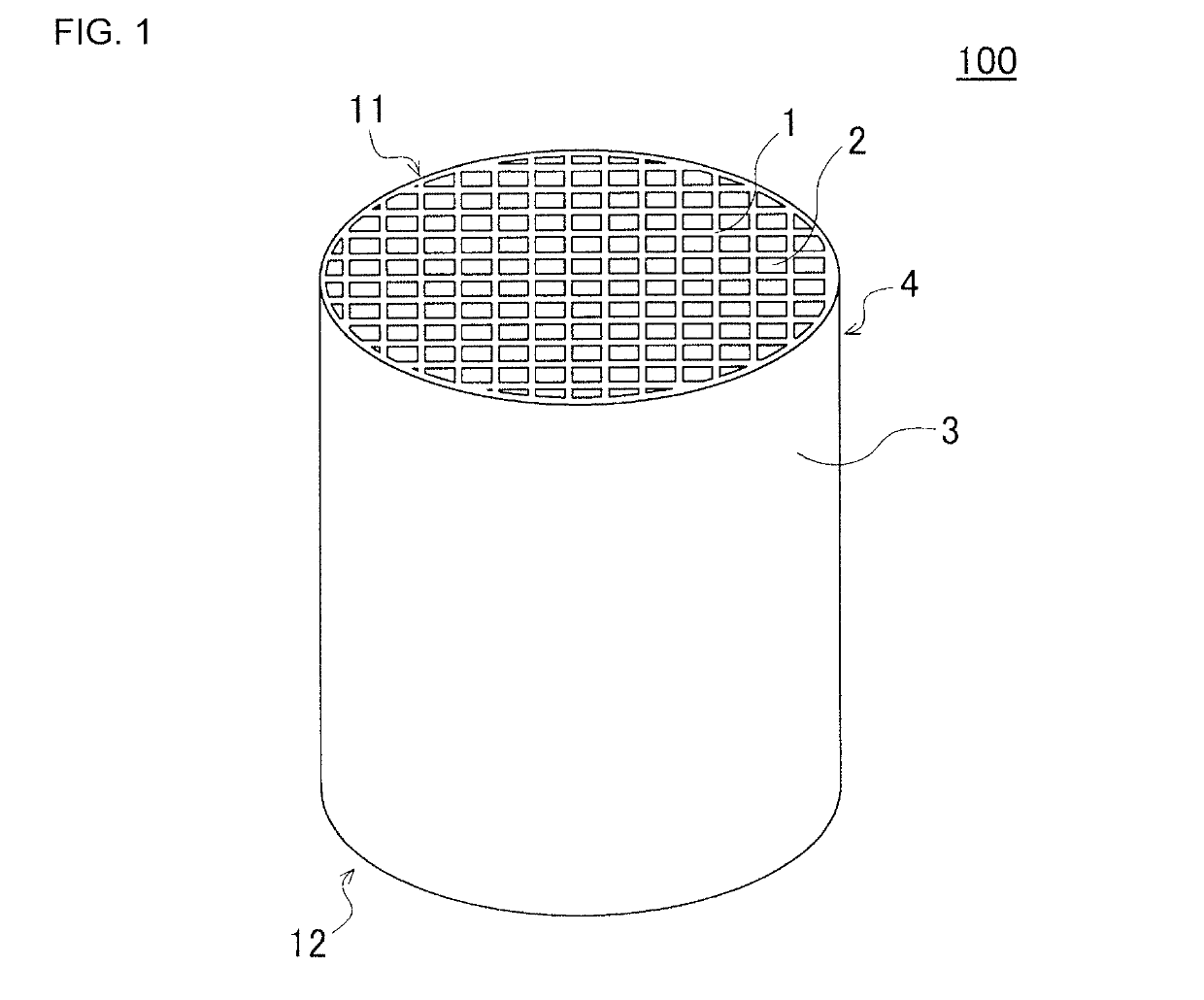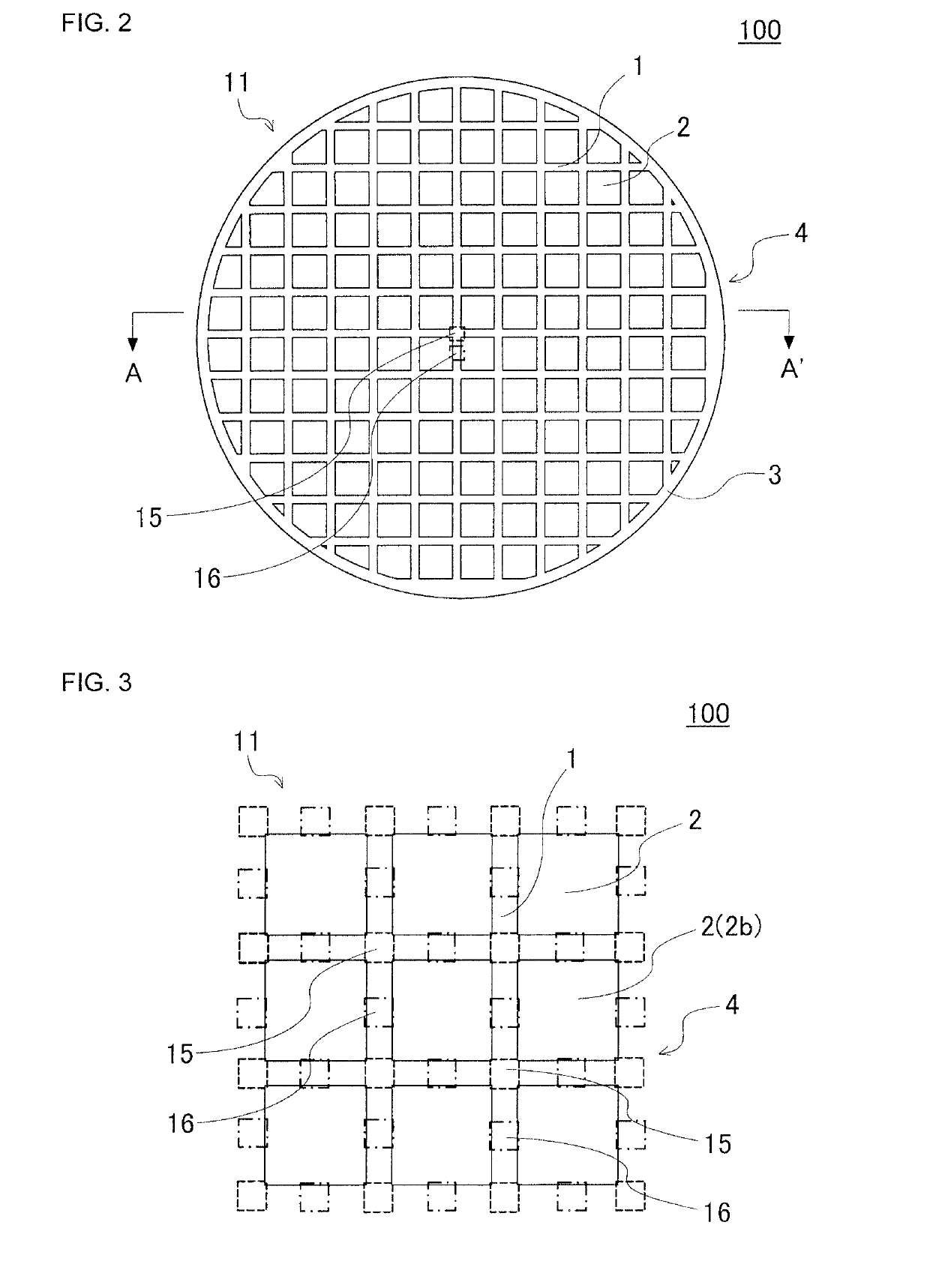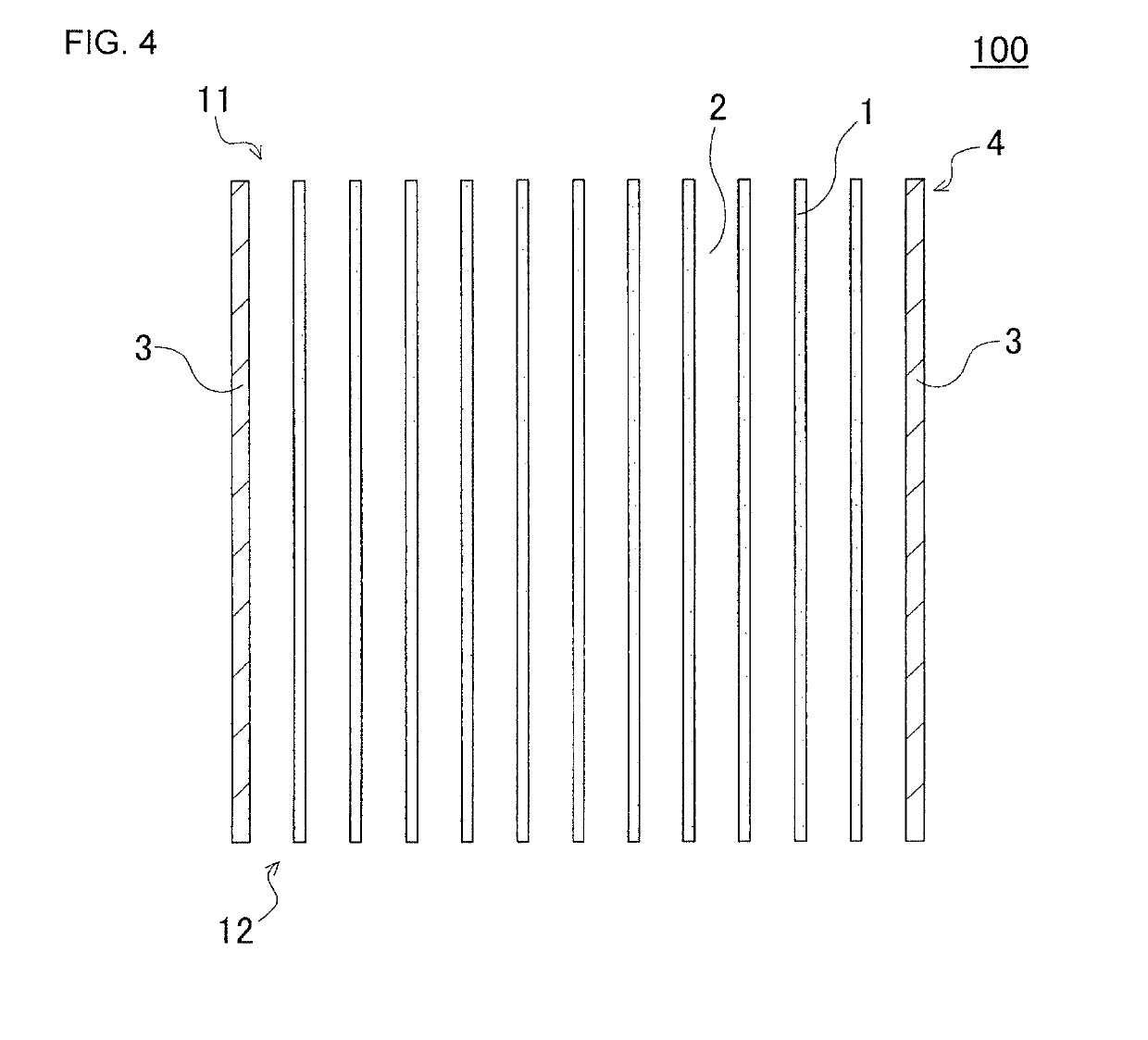Honeycomb structure
a honeycomb and structure technology, applied in the field of honeycomb structure, can solve the problems of inability to solve, inability to inhibit anything, and inability to so as to improve the thermal shock resistance of the whole honeycomb structure, effectively inhibit crack generation, and improve the effect of thermal shock resistan
- Summary
- Abstract
- Description
- Claims
- Application Information
AI Technical Summary
Benefits of technology
Problems solved by technology
Method used
Image
Examples
first embodiment
(1) Honeycomb Structure (First Embodiment)
[0034]As shown in FIG. 1 to FIG. 4, a first embodiment of a honeycomb structure of the present invention is a honeycomb structure 100 including a honeycomb structure body 4 having porous partition walls 1. Here, FIG. 1 is a perspective view schematically showing the first embodiment of the honeycomb structure of the present invention as seen from the side of a first end face. FIG. 2 is a plan view schematically showing the first end face of the honeycomb structure shown in FIG. 1. FIG. 3 is an enlarged plan view in which a part of the first end face of the honeycomb structure shown in FIG. 2 is enlarged. FIG. 4 is a cross-sectional view schematically showing a cross section taken along the A-A′ line of FIG. 2.
[0035]The partition walls 1 of the honeycomb structure body 4 are arranged to surround a plurality of cells 2 which extend from a first end face 11 to a second end face 12 and become through channels for a fluid. That is, the plurality ...
example 1
[0074]To 100 parts by mass of cordierite forming raw material, 0.5 parts by mass of a pore former, 33 parts by mass of a dispersing medium and 5.6 parts by mass of an organic binder were added, mixed and kneaded to prepare a kneaded material. As the cordierite forming raw material, alumina, aluminum hydroxide, kaolin, talc and silica were used. Water was used as the dispersing medium, a water absorbable polymer having an average particle diameter of 10 to 50 μm was used as the pore former, methylcellulose was used as the organic binder, and dextrin was used as a dispersing agent.
[0075]Next, the kneaded material was extruded by using a predetermined die, to obtain a honeycomb formed body in which a cell shape was quadrangular and an overall shape was a round pillar shape. Additionally, during the extrusion, there was used an extruding die in which slits corresponding to a cross-sectional shape of the honeycomb formed body were formed, and in the extrusion, an extrusion speed was rais...
examples 2 to 20
[0083]A cell structure, a cross-sectional shape and a porosity A and a porosity B of partition walls were changed as shown in Table 1 and Table 2, to prepare honeycomb structures of Examples 2 to 20. As to Examples 5, 6, 13 and 14, a cell shape was a hexagon. Furthermore, as to Examples 7 and 8, a cross-sectional shape of the honeycomb structure was an ellipse.
[0084]As to Examples 19 and 20, silicon carbide (SiC) was used as a material to prepare the honeycomb structure. The honeycomb structure of each of Examples 19 and 20 was a honeycomb structure of a segmented structure.
[0085]During preparation of the honeycomb structures of Examples 2 to 20, an extrusion pressure during extrusion was adjusted, and values of a porosity A and a porosity B of partition walls were adjusted.
[0086]As to the honeycomb structures of Examples 1 to 20, evaluations on “thermal shock resistance (robustness)” were performed by the following method. Table 3 shows the results.
[0087](Thermal Shock Resistance (...
PUM
| Property | Measurement | Unit |
|---|---|---|
| porosity | aaaaa | aaaaa |
| porosity | aaaaa | aaaaa |
| thickness | aaaaa | aaaaa |
Abstract
Description
Claims
Application Information
 Login to View More
Login to View More - R&D
- Intellectual Property
- Life Sciences
- Materials
- Tech Scout
- Unparalleled Data Quality
- Higher Quality Content
- 60% Fewer Hallucinations
Browse by: Latest US Patents, China's latest patents, Technical Efficacy Thesaurus, Application Domain, Technology Topic, Popular Technical Reports.
© 2025 PatSnap. All rights reserved.Legal|Privacy policy|Modern Slavery Act Transparency Statement|Sitemap|About US| Contact US: help@patsnap.com



